Same spring is attached with 2kg , 3kg and 1kg blocks in three different cases as shown in figure. If x1 , x2 and x3 be the extensions in the spring in these cases then (Assume all the block s to move with uniform acceleration).
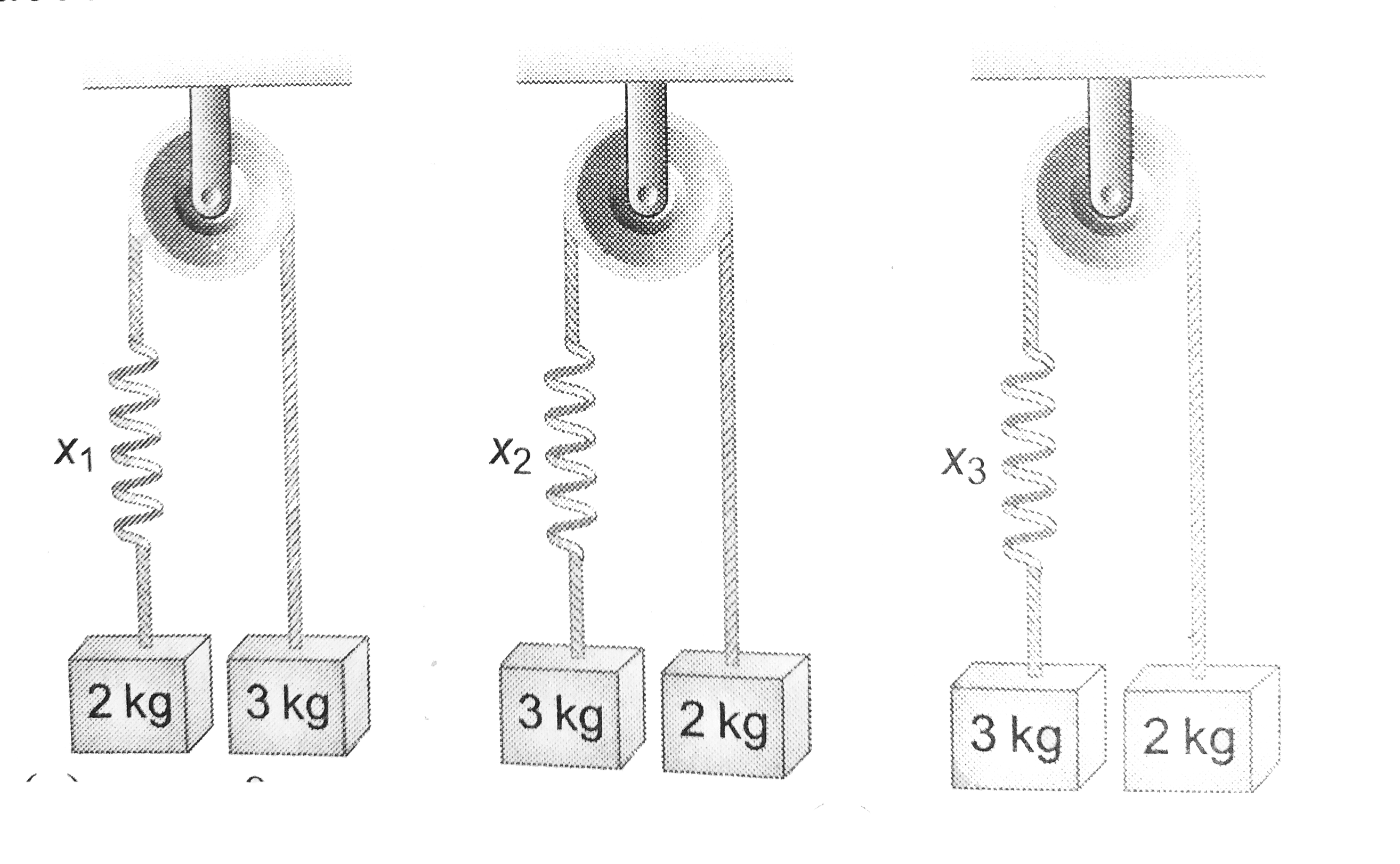
x1=0,x3>x2
x2>x1>x3
x3>x1>x2
x1>x2>x3
The correct Answer is:B
If m1 and m2 are masses of blocks, then tension T in the string as well as spring is
T=2m1m2m1+m2g
T1=2g,T2=2.4g and T3=1.33g
T2>T1>T3
or x2>x1>x3
Similar Questions
From the fixed pulley, masses 2kg, 1kg and 3kg are suspended as shown in the figure. Find the extension in the spring if k=100N/m. (Neglect oscillations due to spring)
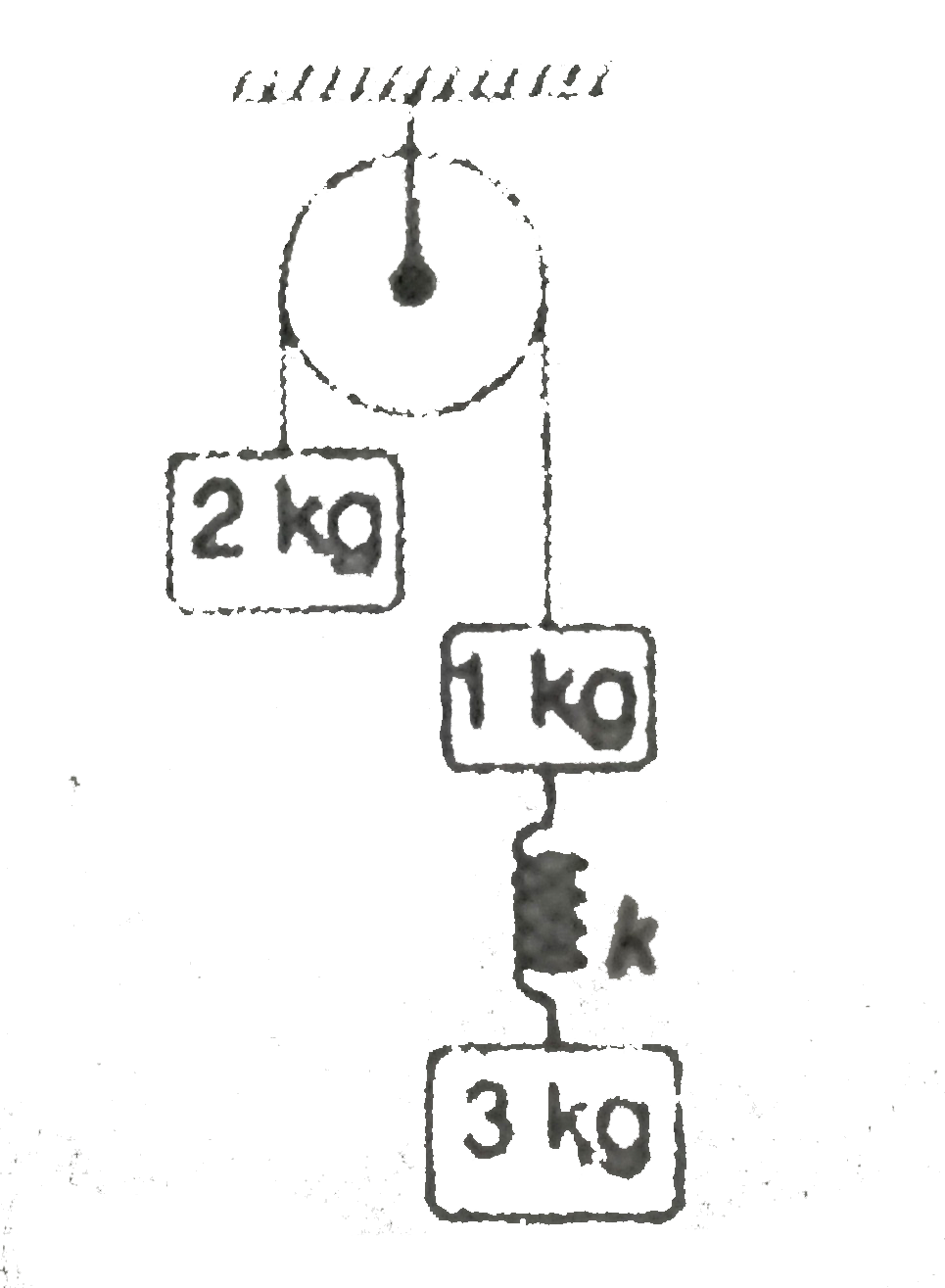 View Solution
View SolutionIn the arrangement shown in figure , find the ratio of tension in the strings attached with 4kg block and the with 1kg block
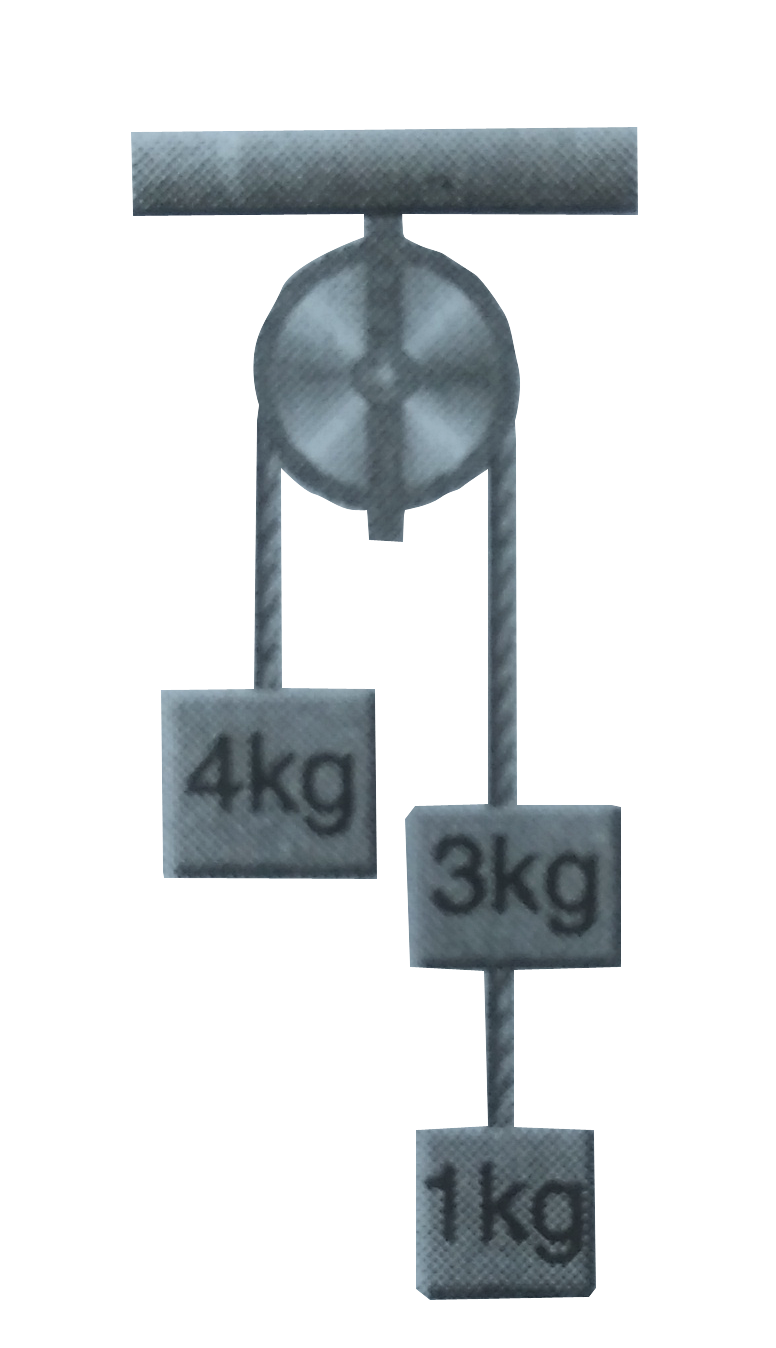 View Solution
View SolutionThree block of masses 1kg, 4kg and 2kg are placed on a smooth horizontal plane as shown in figure. Find
(a) the acceleration of the system,
(b) the normal force between 1kg block and 4kg block,
( c) the net force on 2kg block
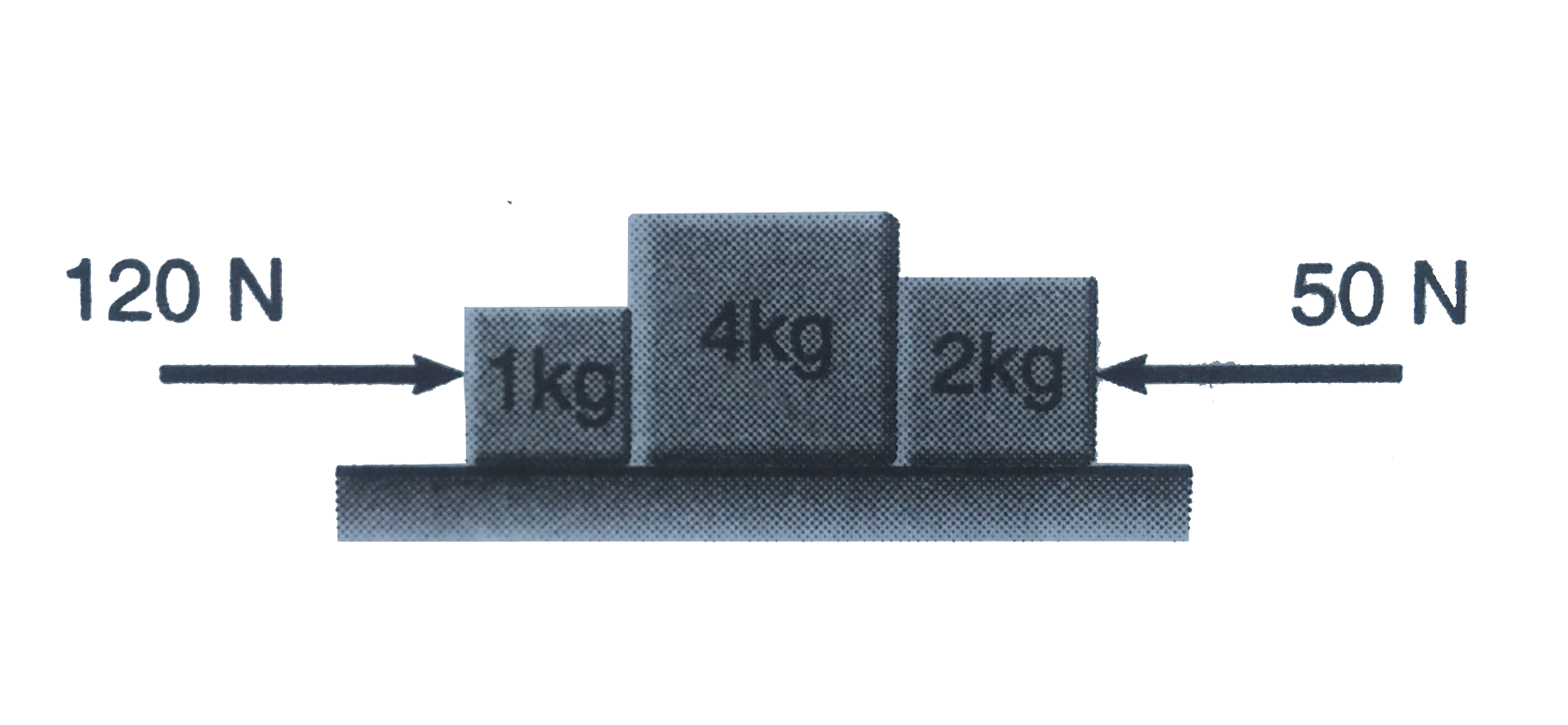 View Solution
View SolutionConsider the situation shown in figure. Calculate a. the acceleration of the 1.0 kg blocks, b. the tension in the strilng connecting the 1.0 kg blocks and c. the tension in the stting attached to 0.50 kg.
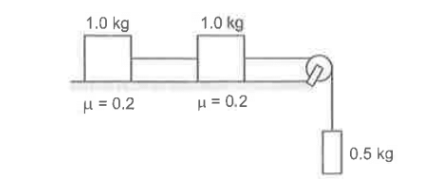 View Solution
View SolutionIn each case m1=4kg and m2=3kg. If a1 and a2 and a3 are the respective acceleration of the block m1 in given situation, then
 View Solution
View SolutionA block is attached with an ideal spring and string, and is in equilibrkum as shown in Figure. The acceleration of the block just after breaking the string is a1 and just after breaking the spring is a2. Then
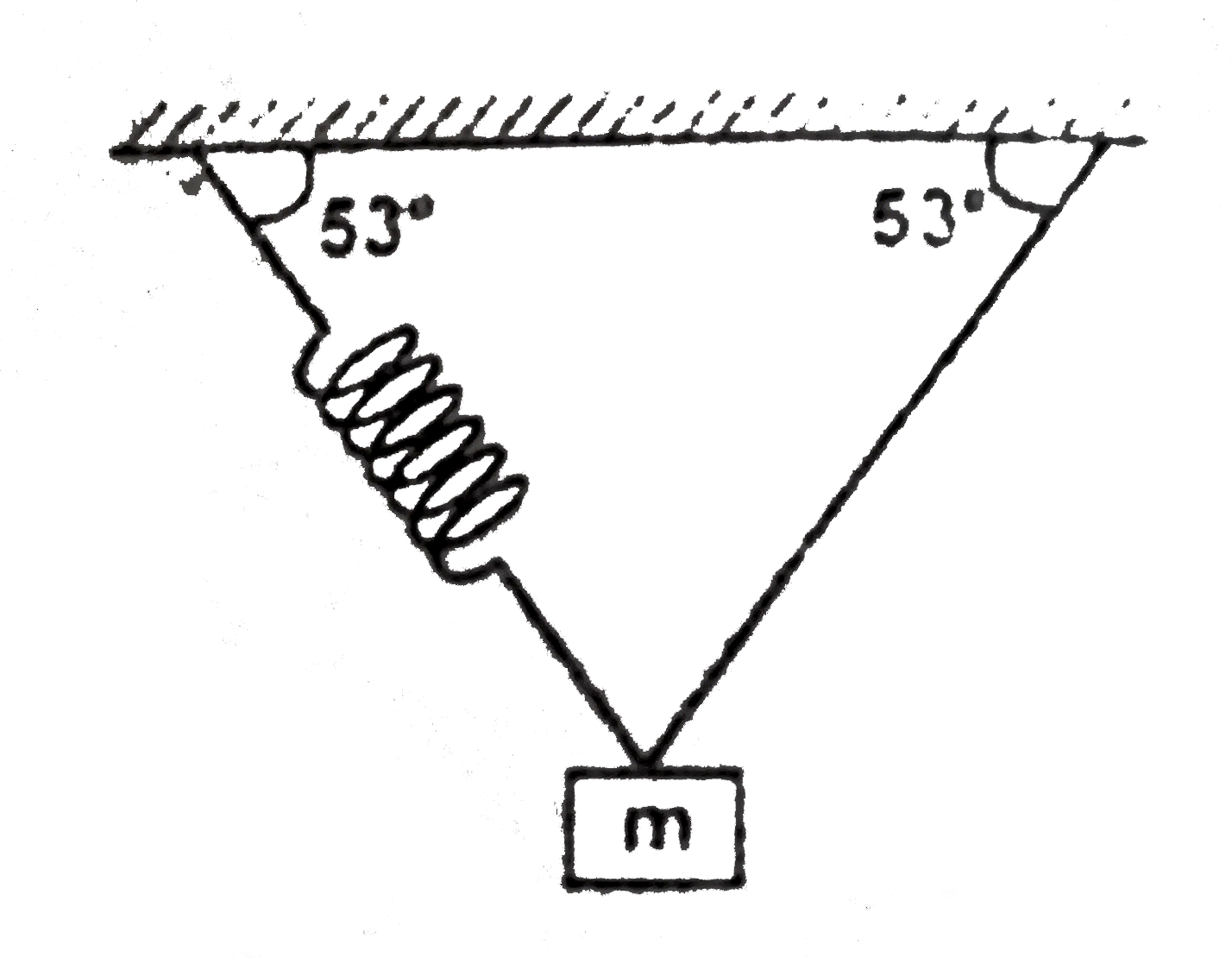 View Solution
View SolutionFrom the fixed pulley, masses 2 kg, 1 kg and 3 kg are suspended as shown is figure. Find the extension in the spring when acceleration of 3 kg and 1 kg is same if spring constant of the spring k = 100 N/m. (Take g=10ms−2)
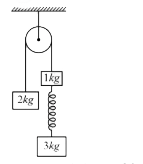 View Solution
View SolutionTwo block of mass 4 kg and 5 kg attached a light spring are suspended by a string as shown in figure. Find acceleration of block 5 kg and 4 kg just after the string is cut.
 View Solution
View SolutionIn figure, a block A of mass 2kg is moving to the right with a speed 5m/s on a horizontal frictionless surface. Another block B of mass 3kg a massless spring of spring constant 222N/m attached to it, is moving to the left on the same surface and with a speed 2m/s . Let us take the direction to the right as the positive X− direction. At some instant, block A collides with the spring attached to block B. At some other instant , the spring has maximum compression and then, finally, blocks move with their final velocities. Assuming that (i) the spring force is conservative and so there is no conversion of kinetic energy to internal energy and (ii), no sound is made when block A hits the spring, answer the following questions.

When the blocks are yet to attain their final velocities, in this situation at any instant when block A is moving with a velocity 4ˆim/s , velocity of block B will then be :View SolutionIn figure, a block A of mass 2kg is moving to the right with a speed 5m/s on a horizontal frictionless surface. Another block B of mass 3kg a massless spring of spring constant 222N/m attached to it, is moving to the left on the same surface and with a speed 2m/s . Let us take the direction to the right as the positive X− direction. At some instant, block A collides with the spring attached to block B. At some other instant , the spring has maximum compression and then, finally, blocks move with their final velocities. Assuming that (i) the spring force is conservative and so there is no conversion of kinetic energy to internal energy and (ii), no sound is made when block A hits the spring, answer the following questions.

In the collision process, while the spring is getting compressed :View Solution

